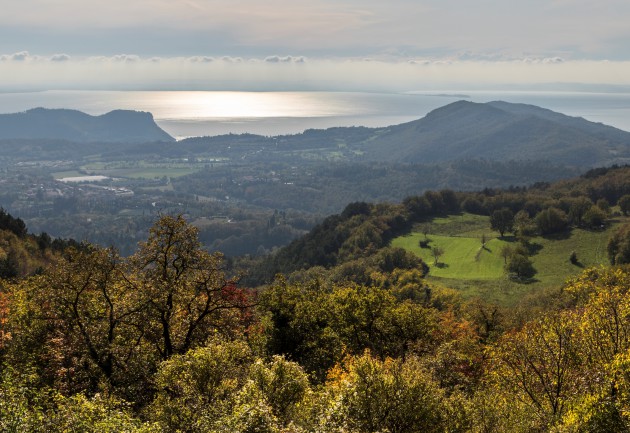
Friday read: The revival of Bardolino’s crus
Few Italian wine regions have had as much of a roller coaster ride as Bardolino, nestled up against the beautiful eastern shores of Lake Garda, where wine has been made since Roman times.
Bardolino red – first referred to after three distinct crus were identified in 1825 – was highly regarded in the early 20th century, the light and fruity wines made in the 16 villages of the region found on the top European dining tables alongside Beaujolais and Burgundy. After the crus were abandoned in 1968, Bardolino’s reputation took a dive, and the wines became typically something you would buy in UK corner shops alongside cheap Chianti and Hungarian Bulls Blood – hardly something to be taken seriously by wine lovers.
Today though, things are on the up again thanks to new regulations passed on 12 April last year by the Consorzio di Tutela Chiaretto e Bardolino, which impact on wines just being released onto the market. In essence, the region has looked to its past to build its future, by reviving those 1825 crus and with them Bardolino’s international reputation.
According to Consorzio director Angelo Peretti, the three crus – La Rocca, close to the Garda shore, Montebaldo, on a high wild-flower covered mountain overlooking the lake, and the more inland Sommacampagna – yield distinctive wines reflecting very different soil types and climactic conditions. Altitude and rainfall both rise from the south to the north of the lake, and there are some 66 different soil types in a region that enjoys characteristics of both an Alpine and Mediterranean climate, thanks to the proximity of the Dolomites and the sheer size of Lake Garda, which – at 370 sq km – is Italy’s largest.
Peretti says the wines are also helped by the sheer expressiveness of the main grape variety used, Corvina, with the varieties Rodinella, Molinara and Corvinone (the same in Valpolicella/Amarone) also playing an important support role.
“Although these wines are fresh and approachable when young, with zesty acidity, this acidity makes them great for ageing for at least 10-15 years, when they show more complexity and spice.”
He confirms that scientific testing supports the crus’ distinctiveness, something I confirmed by tasting through some of the wines just released from each of the three crus. The Montebaldo Bardolino Morlongo Anniversario 50 Vendemmie 2020 from Vigneti Villabella (70% Corvina, 20% Rondinella and 10% Corvinone) is a lively red, showing great fragrance and notes of strawberry and cherry with mountain herbs on the palate. Meanwhile, Monte del Fra’s Sommacampagna Bardolino 2020 made from grapes from inland vineyards to the south-east of Lake Garda is cherry and red fruit charged, slightly heavier and darker in style, with a suggestion of tobacco on the palate. Meanwhile, La Rocca Bardolino 2020 from Poggio della Grazie is classic Bardolino, light, perfumed and easy drinking. All wines are light to medium bodied, with alcohol between 12.5-13% and retail in the UK at between £10-14.
The Consorzio admits that with some 20 producers now making around 400,000 bottles of cru wine, cru Bardolino is a drop in the ocean compared to the 14m bottles produced in a typical vintage in the Bardolino region. But this is clearly just a start and Bardolino does have form in reinventing itself.
In 2014 the Consorzio and producers across Bardolino initiated what Peretti and others now call the rosé revolution, with the reinvention of Chiaretto di Bardolino. Chiaretto – which translates as ‘very light’, almost ethereal – is a lightly extracted, approachable and saline wine with a heritage dating back to Roman times, when this region was part of Cisalpine Gaul and the wine was made in the gardens of villas around the lake.
Italy’s answer to Provence rosé, Chiaretto is now the country’s best selling pink wine and is successfully exported to numerous markets, with several producers now making a spumante version as well as more complex styles, including barrel and amphora aged.
Talking about the cru reds, Peretti says: “Many of the wines have only recently come onto the market, but the consumer response has already been good and the quality and distinctiveness of the wines is appreciated. The outlook feels very positive.”
Keywords:
- wine
- UK
- made
- consorzio
- Wines
- crus
- region
- Garda
- different soil types
- bardolino
- lake
- chiaretto
- lake garda
- three crus
- different soil
- roman times
- la rocca
- sommacampagna bardolino 2020
- monte del fra’s
- del fra’s sommacampagna
- fra’s sommacampagna bardolino




